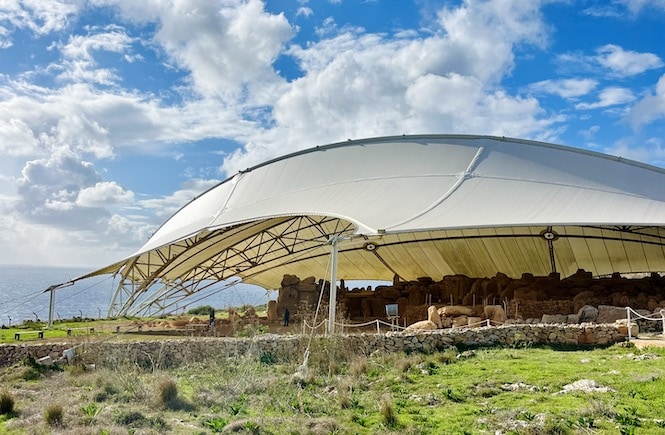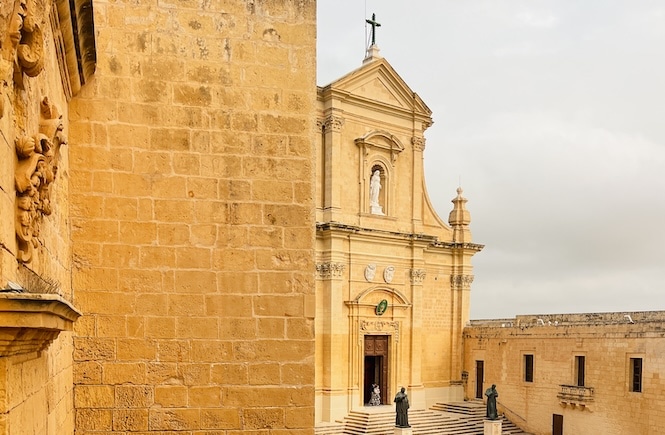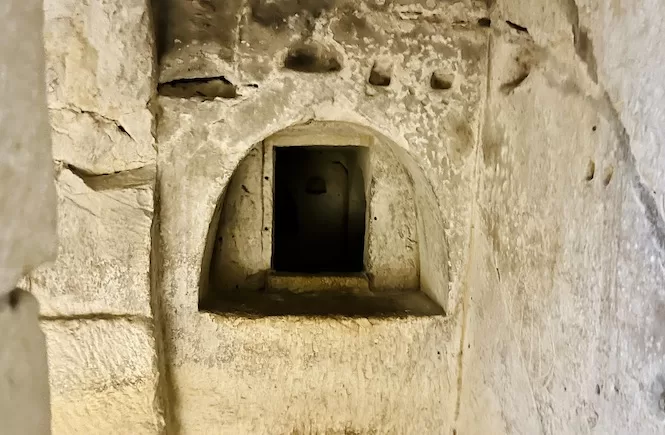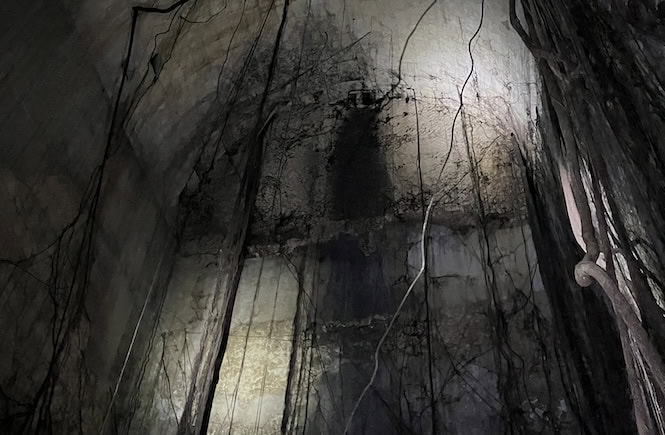Just a quick heads up – some of the links I share on this site are affiliate links. That means if you click on one and make a purchase, I may earn a small commission at no extra cost to you. Your support through these links helps me create valuable content.
The Mnajdra Temples in southern Malta are more than just old stones. These Meghalitic temples take us back to ancient times and they are on the UNESCO World Heritage List. I think everyone should see them.
Have you ever thought of the lives of people thousands of years ago? The Mnajdra Temples offer clues to this past. They provide a window into history and connect to the ancient world.
I’ve lived in Malta since 2011. I love its history and culture and want to share that with you. In this post, I’ll guide you through these old temples. We’ll look for their past and picture ancient ceremonies. Maybe you’ll love Malta’s history as much as I do.
What is a Meghalitic Temple?
Megalithic temples are prehistoric structures typically constructed during the Neolithic and Bronze Age periods.
These temples are characterised by their large stone structures, hence the term “megalithic”. This name comes from the Greek words “mega,” meaning large, and “lithos,” meaning stone.
Megalithic temples often display sophisticated architectural planning and skill, despite being built before modern engineering.
They were typically used for religious or ceremonial purposes. This could include rituals, gatherings, and astronomical observations.
While megalithic temples are found in various parts of the world, some of the most famous examples are located in Western Europe. These examples are particularly evident in Malta, Britain and Ireland.
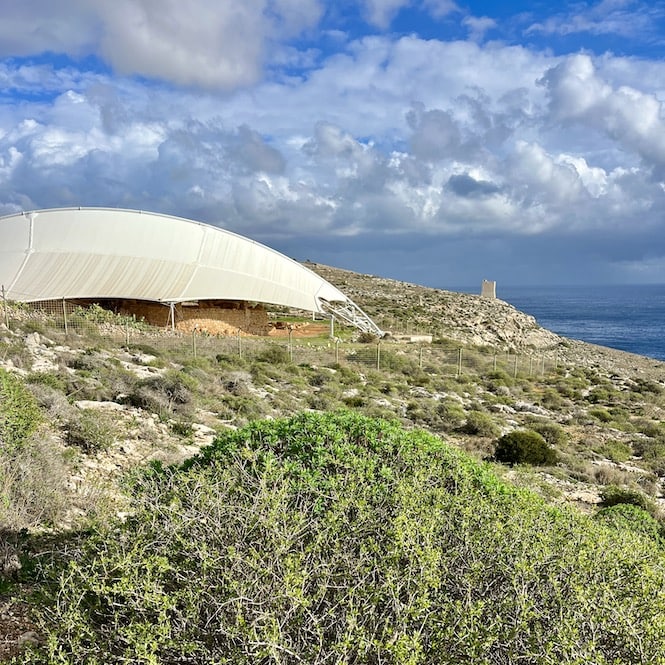
Mnajdra Temples: Architectural Design and Construction
The Mnajdra temples, dating back over 5,000 years, consist of three distinct buildings. They are crafted from both globigerina and coralline limestone. Each of these structures testifies to ancient architectural skill.
These megalithic structures are a remarkable example of early human ingenuity. Each temple has a unique design and is adorned with intricate carvings.
If you want to understand Malta’s history well, take a walking tour in Valletta. Look at my guide for the best Valletta walking tours.
Astronomical Significance of Mnajdra Temples
The design and structure of Mnajdra show careful planning. Parts of the temple line up with the equinoxes and solstices.
Equinoxes are the days in spring and autumn when are the same length.
Solstices are when we have the longest and shortest days of the year.
I recently visited Mnajdra during the winter solstice. It was a magical moment when the morning sun’s first rays touched a temple stone. Standing there, I felt a connection to the ancient farmers who once celebrated these days here.
These farmers relied on knowing when the seasons changed for their crops. The temple’s design, aligned with the sun on key days, was their way of tracking time. It was ingenious – they used the temples as giant calendars to know the right times for planting and harvesting.
Visiting Mnajdra shows the deep bond between ancient people and nature. They used the sun and stone to keep track of time, a concept that is still awe-inspiring today.
Heritage Malta organises events during the equinoxes and solstices at the Mnajdra Temples. If you are in Malta during these times, I recommend participating.
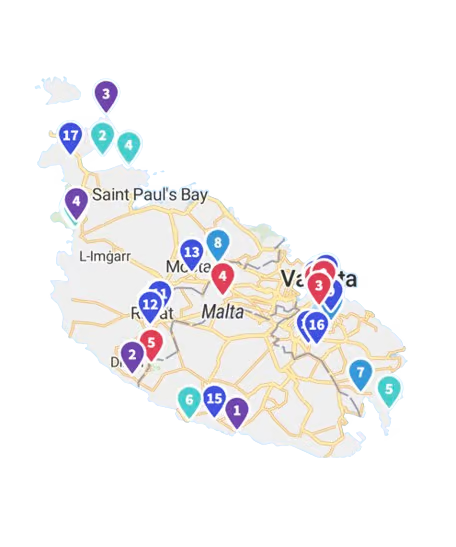
Get a FREE Attractions Map
Planning a trip to Malta, Gozo, or Comino? Get this free interactive map filled with insider tips, Google Maps links, and more.
Archaeological Discoveries
The Mnajdra Temples have been a rich site for archaeological discoveries, offering valuable insights into their ancient use.
Among the findings, pottery fragments, stone tools, and small altars stand out. These items suggest that temples were used as centres of community life and spiritual practices.
Altars hint at ritualistic activities, perhaps ceremonies related to agriculture or the changing seasons. These ceremonies are deeply rooted in Malta’s Neolithic culture.
Each archaeological effort at Mnajdra brings new understandings and raises new questions about the Neolithic era in Malta.
The ongoing exploration and interpretation of these findings enrich our knowledge of Mnajdra. However, they also deepen our appreciation for the ingenuity and spiritual depth of the ancient peoples who built and used these remarkable structures.
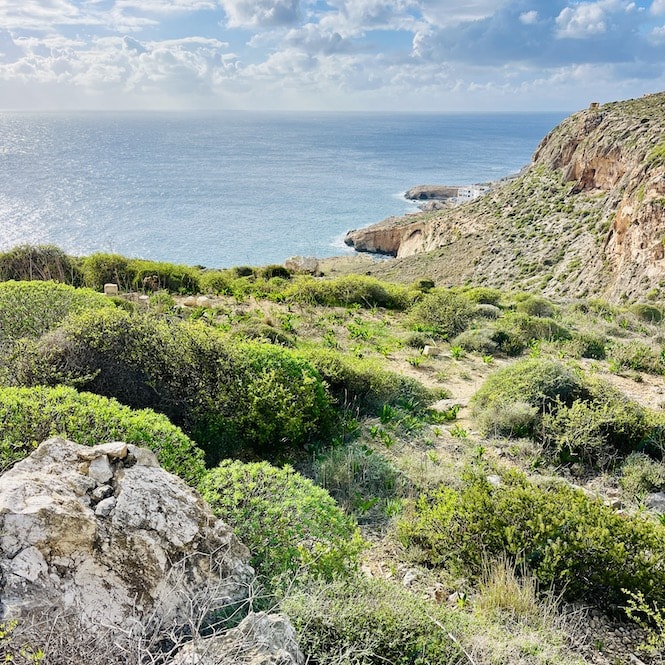
The Significance of Mnajdra Temples
Mnajdra holds a significant place in Malta’s history and culture. These megalithic temples showcase an advanced understanding of architecture, astronomy, and spirituality.
Mnajdra is a key to revealing how these early societies lived, worshipped, and understood the world around them.
Gaining international recognition, Mnajdra is part of Malta’s UNESCO World Heritage Sites, emphasising its global importance. This status has brought heightened awareness and efforts towards preserving these ancient structures.
National and international resources have been mobilised to protect and maintain Mnajdra, ensuring its survival for future generations to appreciate and learn from.
Planning Your Visit
Mnajdra is just a 500-meter walk from the Ħaġar Qim temples. One ticket lets you visit both sites. You can purchase this ticket in the visitor centre. Click here to see admission fees and opening hours.
Expect to spend 90 minutes to three hours exploring these fascinating sites.
A footpath connects Mnajdra and Ħaġar Qim, making it easy to visit both in one trip. Here’s a guide to plan your visit:
When to visit: Mnajdra is open throughout the year. The most spectacular times to visit are during the equinoxes and solstices, when the sun aligns with the temples, creating a breathtaking display. However, from June till mid-September, it’s advisable to avoid going at noon due to the intense midday heat.
Getting there: Mnajdra is on Malta’s southern coast. It’s easy to get to by car or public transport. There’s parking near the site, and buses run regularly.
- Location: link to Google Maps
- Nearest bus stop: Hagar
- Walking distance from the bus stop: 200 meters
- Frequency of the buses: every 30 minutes
- Parking available: in the car park or along the road
What to expect: The temples are outdoors, so dress for a walk in nature. Wear comfy shoes and bring water, especially in the summer. The area offers beautiful sea views and is great for photos.
Facilities and accessibility: The site has a visitor centre to learn about the temples. The paths are well-kept, so everyone can visit.
Guided tours: For a deeper experience, take a guided tour. Guides share interesting facts about temple history and design.
Respect the site: Mnajdra is protected by UNESCO. Please don’t touch the stones and follow all site rules.
Make a day of it: After visiting Mnajdra and Ħaġar Qim, consider exploring the Blue Grotto and Għar Lapsi, a natural swimming pool. The area also has lovely nature walks, like Mnajdra to Għar Lapsi. It’s one of my favourite walks in Malta.
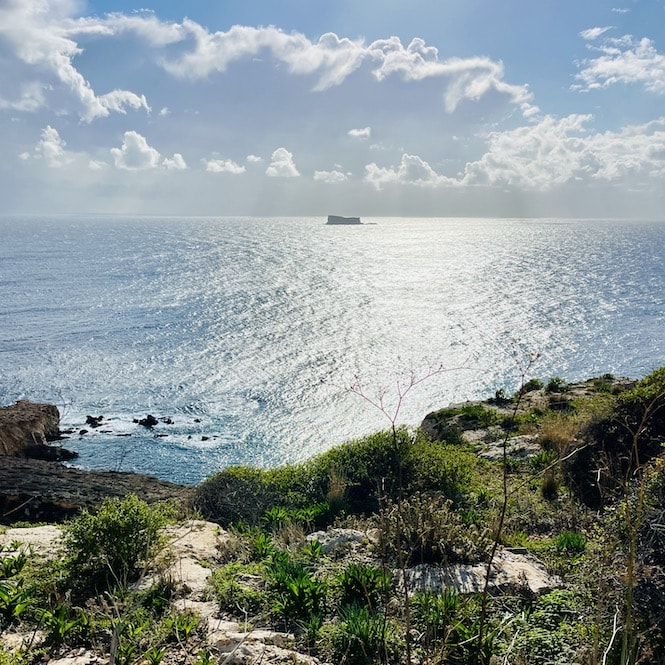
Mnajdra Temples: Frequently Asked Questions
How old are the Mnajdra temples?
The Mnajdra temples were built around the fourth millennium BCE, between 3600 and 2500 B.C. They are among the oldest religious sites on Earth.
Can you visit Mnajdra?
Yes, you can visit Mnajdra. To enter Mnajdra, visitors first pass through Hagar Qim. A single ticket is required for both sites. Mnajdra temples are open daily except on public holidays. Take a look at this site before you head out
What are the megalithic temples in Malta?
Malta has six megalithic temples. These are Ġgantija, Ħaġar Qim, Mnajdra, Skorba, Ta’ Ħaġrat, and Tarxien. These prehistoric monumental buildings are remarkable for their diversity of form and decoration and are some of the earliest free-standing stone buildings in the world.
What features are found at Mnajdra Malta?
Mnajdra features three sanctuaries, each composed of several conjoined buildings arranged in Figure eight. The South building’s doorway aligns with sunrise during the equinoxes. During solstices, sunlight passes through the main doorway and illuminates decorated slabs inside the temple.
Is Malta older than Stonehenge?
Yes, Malta is home to the oldest free-standing structures in the world, older than Stonehenge and the Great Egyptian Pyramids. The Megalithic Temples of Malta, including Mnajdra, date back to between 3600-2500 B.C., with the Ġgantija Temples being among the oldest, dating back to around 3600-3200 B.C.
What is the oldest thing in Malta?
The oldest thing in Malta is the Ġgantija temples in Gozo, dating back to around 3600-2500 BC. The Ghar Dalam Cave also holds the earliest evidence of human settlement on Malta, about 7,400 years ago.
How old is Malta in years?
As a country, Malta is 59 years old, and founded in 1964. However, Malta has been inhabited since around 5900 BC, making its history span thousands of years.
The Mnajdra Temples are a must-visit for their astronomical importance and the secrets revealed by archaeological work.
Yet, Malta’s historical journey goes far beyond Mnajdra. The island is full of historical spots waiting to be explored.
I suggest visiting places like the beautiful city of Valletta, the old Mdina, historic Rabat, the fascinating Three Cities, and the Xemxija Heritage Trail. Each spot shows a different part of Malta’s history.
Also, don’t forget to explore the Ta’ Bistra Catacombs. For more on Malta’s historical places, take a look at my guide to the island’s top historical sites and a complete list of Unesco Sites.

